
CROS RIC 80
User Guide

2
Content
Welcome 4
Your CROS transmitter 5
Components and names 7
Controls 9
Hearing programs 10
Signal tones 10
Batteries 11
Battery size and handling tips 11
Replacing batteries 12
Daily use 14
Turning on and o 14
Switching to andby mode 14
Inserting and removing the transmitter 15
Changing the hearing program 21
Bluetooth 21
Maintenance and care 22
Transmitter 22
Ear pieces 23
Professional maintenance 25

4
Welcome
Thank you for choosing one of our hearing inrument
accessories.
This guide, along with support from your Hearing Care
Professional, will help you underand the advantages
and greater quality of life this accessory oers.
CAUTION
It is important to read this user guide thoroughly
and completely. Follow the safety information to
avoid damage or injury.
It is also important to read and follow the user
guide and safety manual for the hearing inrument
you use with this accessory.

5
Your CROS transmitter
CROS solutions are designed for people with profound
hearing loss in one ear which can not be aided with a
hearing inrument. A CROS transmitter worn on this
ear captures sound from this side and transmits it to
the hearing inrument on the other ear. This allows the
wearer of the hearing inrument to hear sounds from
both sides.
CROS transmitter hearing inrument

6
Two solutions are available:
■ CROS solution:
For people with normal hearing in one ear and
profound hearing loss in the other. Sounds from the
side with hearing loss are captured and transmitted
wirelessly to the good‑hearing side.
■ BiCROS solution:
For people with profound hearing loss in one ear
and less severe hearing loss in the other. Sounds
from the more severe hearing loss side are captured
and transmitted wirelessly to the better‑hearing side.
The hearing inrument processes and amplies the
sounds from both sides.
The CROS transmitter works with our specic wireless
hearing inruments. Your Hearing Care Professional will
advise you on the compatible models.
NOTICE
This user guide only applies to the CROS
transmitter. Your hearing inrument has a separate
user guide.

7
Components and names
➊Ear piece
➋Receiver
➌Receiver cable
➍Microphone
openings
➎Rocker switch (control)
➏Side indicator (red = right ear,
blue = left ear) and receiver
connection
➐Battery compartment
(on/o switch)

8
You can use the following andard ear pieces:
Standard ear pieces Size
Sleeve 3.0, Vented, Closed,
Power
Eartip 3.0 Open
Eartip 3.0 Tulip
You can easily exchange the andard ear pieces. Read
more in section "Maintenance and care".
Cuom-made ear pieces
Earmold 3.0

9
Controls
With the rocker switch you can, for example, switch
hearing programs. The Hearing Care Professional has
programmed your desired functions to the rocker switch.
Rocker switch function L R
Press briey:
Program up/down
Volume up/down
CROS level up/down
Press for about 2 seconds:
Program up/down
Volume up/down
CROS level up/down
Press for more than 3 seconds:
Standby/turn on
L = Left, R = Right
You can also use a remote control to change
hearing programs and adju the volume of your
hearing inruments. With our smartphone app you
have even more control options.

10
Hearing programs
1
2
3
4
5
6
Read more in section "Changing the hearing program".
Signal tones
Signal tones of the CROS transmitter ‑ like a low battery
beep - are sent to the hearing inrument.
Ask your Hearing Care Professional to congure the
signal tones.

11
Batteries
When the battery is low the sound becomes weaker
or you will hear an alert signal. The battery type will
determine how long you have to replace the battery.
Battery size and handling tips
Ask your Hearing Care Professional for recommended
batteries.
Battery size: 312
■ Always use the correct battery size for your device.
■ Remove the batteries if you intend not to use the
device for several days.
■ Always carry spare batteries.
■ Remove empty batteries immediately and follow your
local recycling rules for battery disposal.

12
Replacing batteries
Removing the battery:
XOpen the battery compartment.
XUse the magnet ick to pull out the
battery. The magnet ick is available
as an accessory.
Inserting the battery:
XIf the battery has a protective lm, remove it
only when you are ready to use the battery.
XInsert the battery with the "+" symbol
facing up into the battery door
(refer to the picture).
Note: Please do not place the battery
directly into the housing.

13
XCarefully close the battery compartment. If you feel
resiance, the battery is not inserted correctly.
Do not attempt to close the battery compartment
by force. It can be damaged.

14
Daily use
Turning on and o
You can turn your device on or o via the battery
compartment:
XTurning on: Close the battery compartment.
The default volume and hearing program are set.
XTurning o: Open the battery compartment to the r
catch.
Switching to andby mode
You have following options to switch your device into
andby mode:
■ via remote control
■ via rocker switch.
Turning on or o:
Press and hold the rocker switch for several seconds.
Refer to section "Controls" for the settings of the
rocker switch.
Standby mode mutes the device. When you leave
andby mode, the previously used volume and hearing
program are set.
Note:
■ In andby mode, the device is not turned o
completely. It draws some power. Therefore, we

15
recommend to use andby mode only for a short
period of time.
■ If you want to leave andby mode, but the remote
control is not at hand, turn your device o and
on again (by opening and closing the battery
compartment). In this case, the default volume and
hearing program are set.
Inserting and removing the transmitter
Colored markers indicate the side:
■ red marker = right ear
■ blue marker = left ear
Inserting:
XFor Sleeves, take care that the bend of the Sleeve is
in line with the bend of the receiver cable.
See illurations below.

16
Correct:
Incorrect:
XHold the receiver cable at the bend closer to the
ear piece.
XCarefully push the ear piece in
the ear canal ➊.
XTwi it slightly until it sits well.
Open and close your mouth to
avoid accumulation of air in the
ear canal.
XLift the device, and slide it over
the top of your ear ➋.
➋

17
CAUTION
Risk of injury!
XAlways wear the receiver cable with an ear
piece.
XMake sure that the ear piece is completely
attached.
CAUTION
Risk of injury!
XInsert the ear piece carefully and not too deeply
into the ear.
■ It may be helpful to insert the right hearing
inrument with the right hand and the left
hearing inrument with the left hand.
■ If you have problems inserting the ear piece,
use the other hand to gently pull your earlobe
downwards. This opens the ear canal and eases
insertion of the ear piece.

18
The optional retention rand helps to securely retain the
ear piece in your ear. To attach the optional retention
rand:
XAlign the end of the retention rand with the at end of
the receiver.
XThen press the retention rand towards the receiver
until it clicks into place.

19
To position the retention rand:
XBend the retention rand and
position it carefully into the
bottom of the bowl of your ear
(refer to the picture).
Removing:
XLift the device and slide it over
the top of your ear ➊.
XIf your device is equipped
with a cuom shell or a mold,
remove it by pulling the small
removal cord toward the back
of your head.
XFor all other ear pieces: Grip the receiver in the
ear canal with two ngers and pull it carefully out ➋.
Do not pull the receiver cable.

20
CAUTION
Risk of injury!
XIn very rare cases the ear piece could remain
in your ear when removing the device. If this
happens, have the ear piece removed by a
medical professional.
Clean and dry your device after usage. Read more in
section "Maintenance and care".
Page is loading ...
Page is loading ...
Page is loading ...
Page is loading ...
Page is loading ...
Page is loading ...
Page is loading ...
Page is loading ...
Page is loading ...
Page is loading ...
Page is loading ...
Page is loading ...
Page is loading ...
Page is loading ...
Page is loading ...
Page is loading ...
Page is loading ...
Page is loading ...
Page is loading ...
Page is loading ...
-
 1
1
-
 2
2
-
 3
3
-
 4
4
-
 5
5
-
 6
6
-
 7
7
-
 8
8
-
 9
9
-
 10
10
-
 11
11
-
 12
12
-
 13
13
-
 14
14
-
 15
15
-
 16
16
-
 17
17
-
 18
18
-
 19
19
-
 20
20
-
 21
21
-
 22
22
-
 23
23
-
 24
24
-
 25
25
-
 26
26
-
 27
27
-
 28
28
-
 29
29
-
 30
30
-
 31
31
-
 32
32
-
 33
33
-
 34
34
-
 35
35
-
 36
36
-
 37
37
-
 38
38
-
 39
39
-
 40
40
Ask a question and I''ll find the answer in the document
Finding information in a document is now easier with AI
Related papers
Other documents
-
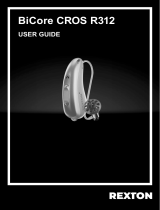 REXTON BiCore CROS R312 User guide
REXTON BiCore CROS R312 User guide
-
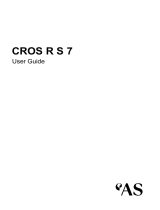 AUDIOSERVICE CROS R S 7 User guide
AUDIOSERVICE CROS R S 7 User guide
-
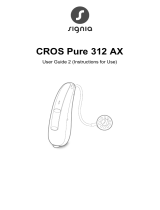 Signia CROS Pure 312 AX User guide
Signia CROS Pure 312 AX User guide
-
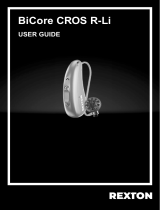 REXTON Demo BiCore CROS R-Li User guide
REXTON Demo BiCore CROS R-Li User guide
-
 Audibel AD6 RIC CROS User guide
Audibel AD6 RIC CROS User guide
-
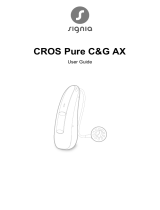 Signia CROS Pure C&G sDemo DAX User guide
Signia CROS Pure C&G sDemo DAX User guide
-
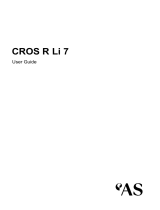 AUDIOSERVICE CROS R Li 7 User guide
AUDIOSERVICE CROS R Li 7 User guide
-
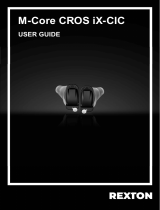 REXTON M-Core CROS iX-CIC User guide
REXTON M-Core CROS iX-CIC User guide
-
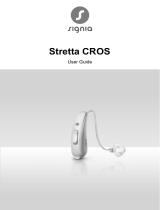 Stretta CROS User guide
Stretta CROS User guide
-
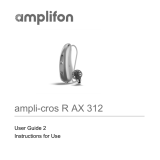 AMPLIFON ampli-cros R AX 312 User guide
AMPLIFON ampli-cros R AX 312 User guide


















































